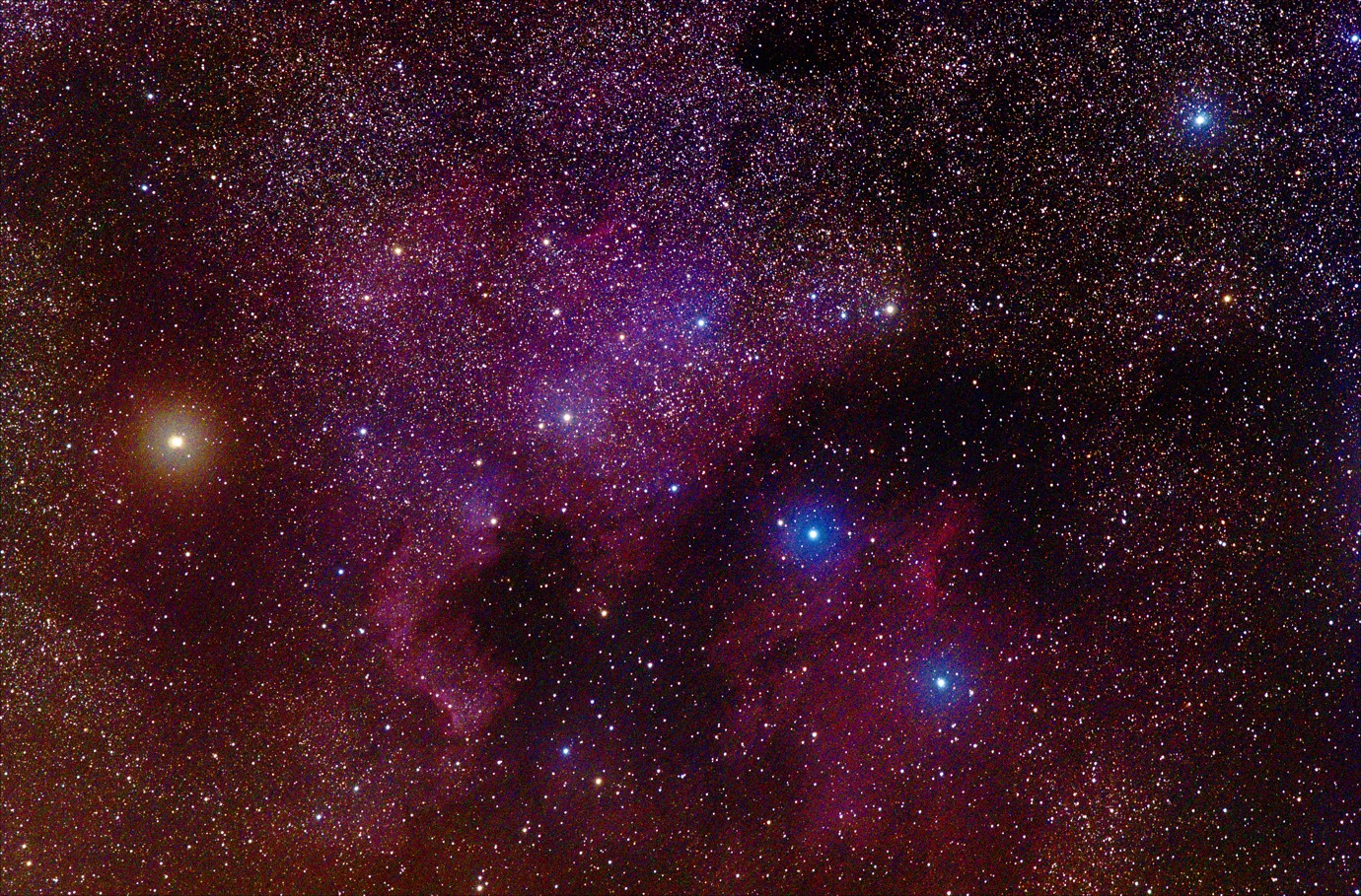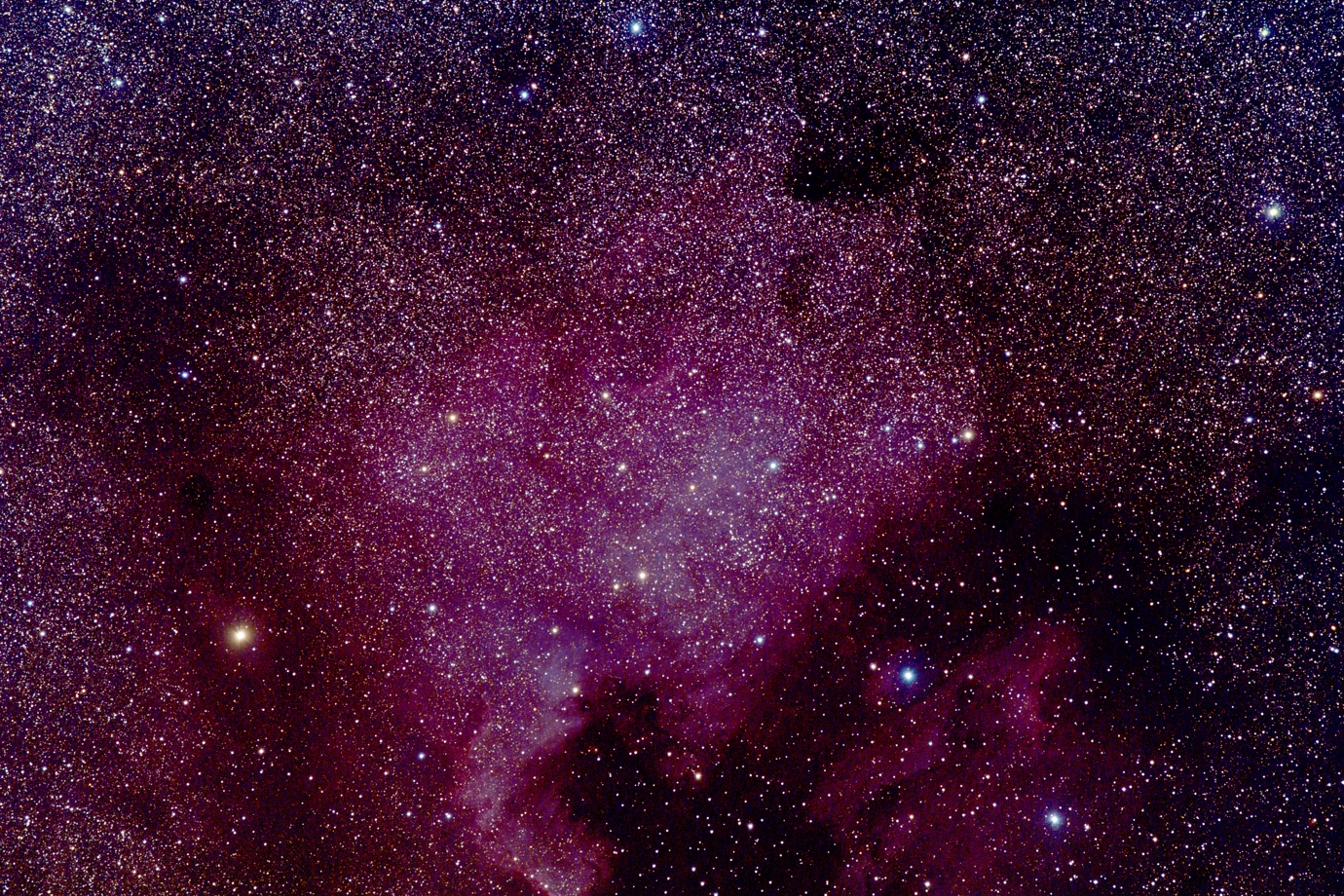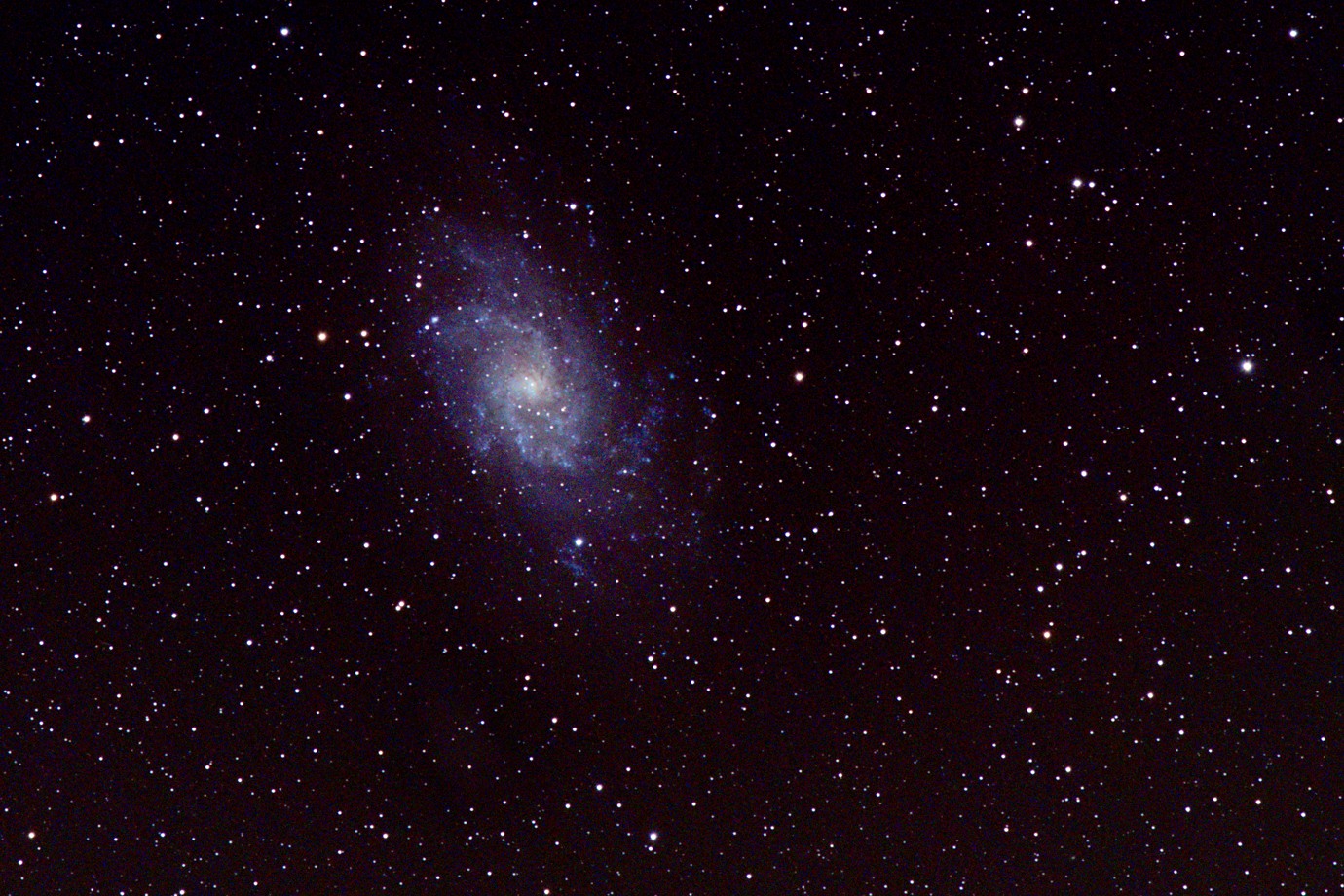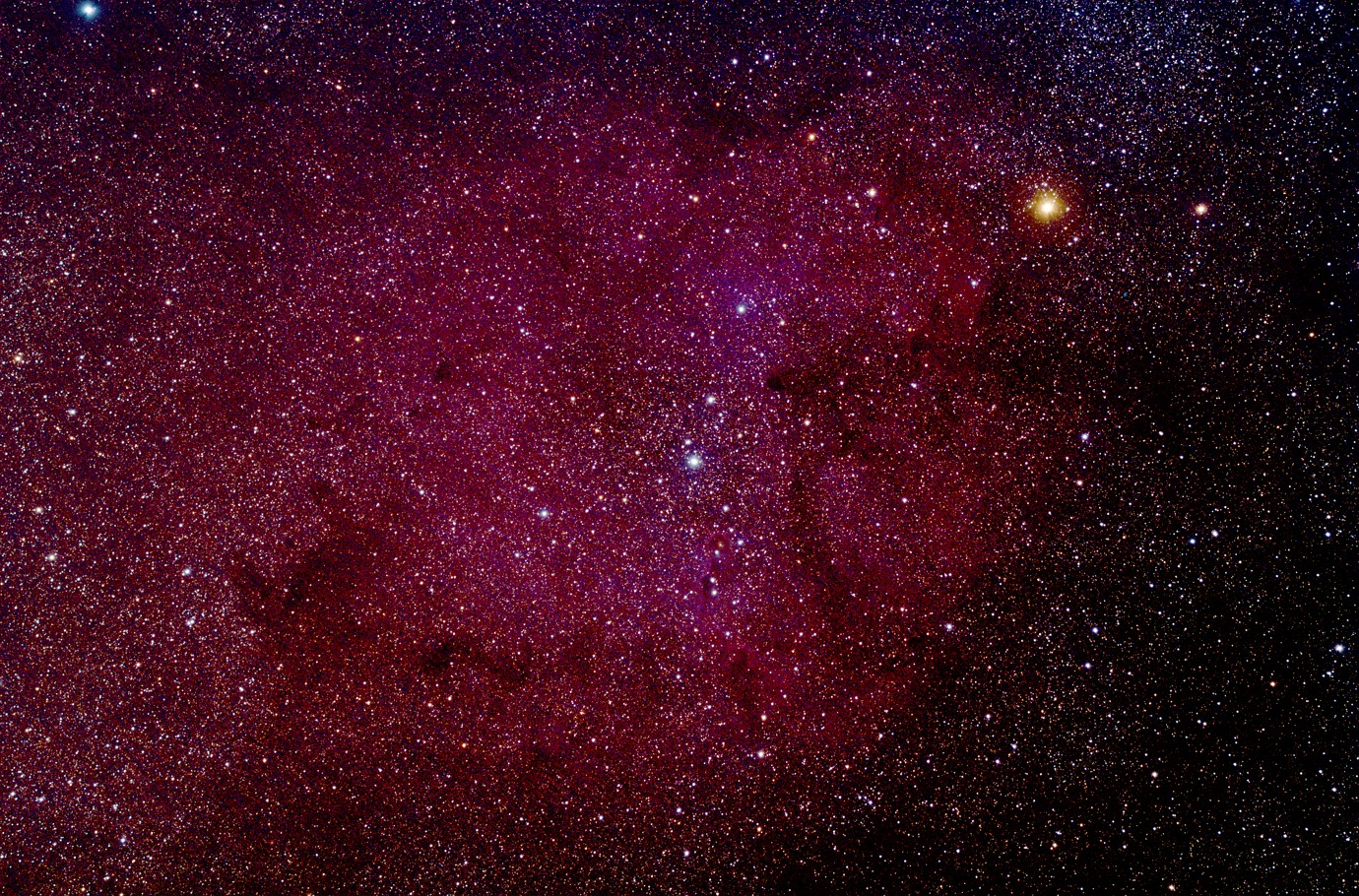Thanks for the comments, Bent, Armando and Tim. Sorry it did not work out for you Armando.
In spite of the aurora, I actually got in some time on the
North America and Pelican Nebulas, this time using my D5100 with good framing before the abrupt onset of the green veil - up to that point it was nice and clean. However I discovered how weak the EN-EL14 battery is with respect to cold at -16°C. I lost a lot of time as I am used to 2-2.5 hours at even lower temperatures with the D7100 and did not foresee when to get out and change the battery. A test I performed with a warm, freshly charged battery when exposing the dark frames afterwards only lasted for 35 minutes with the D5100. It is not so much charge capacity as the voltage drop with lower temperature in combination with the threshold cutoff voltage of the body - after warm up the battery showed all the bars on the display.
I have been pondering whether to get a refurbished D5300 to save my neck and better noise performance during these sessions. However this night's experience with the weak D5100 battery performance might make me lean towards a D7500 or D500 although the D5300 is known for lower dark current while read noise is lower in D7500 :
https://stargazerslounge.com/blogs/entry/2004-d7500-has-high-thermal-pattern-noise/ Anyway here are the two nebulas with the 300mm f/4 PF (with f/4.5 front aperture) on D5100, stack of 36 one minute frames at ISO 1600 on the SkyTracker. As usual best viewed when opened in new tab:
#1

It looks like there was some haze judged by the brightest stars.
An attempt on the North America and Pelican Nebulas a few nights before did not have as nice framing but better atmospheric transparency together with twice as much integration time, 77 one minute frames total of which 95% were stacked = 73 minute total integration time at ISO 1600, 96 darks and 20 bias frames. This deep sky target is quite beautiful and quite easy to frame once familiar with it, so I will keep trying for even better results once I get the chance.
#2

The same night when the above target went out of range I made an attempt on the
Triangulum Galaxy. I got in 90 one minute frames of which 95% were stacked = ca. 85 minutes total integration time at ISO 1600.
#3

Finally a few nights before, also a first for me, I imaged the
Elephant's Trunk Nebula, a hydrogen emission nebula, stack of 76 one minute frames.
#4
